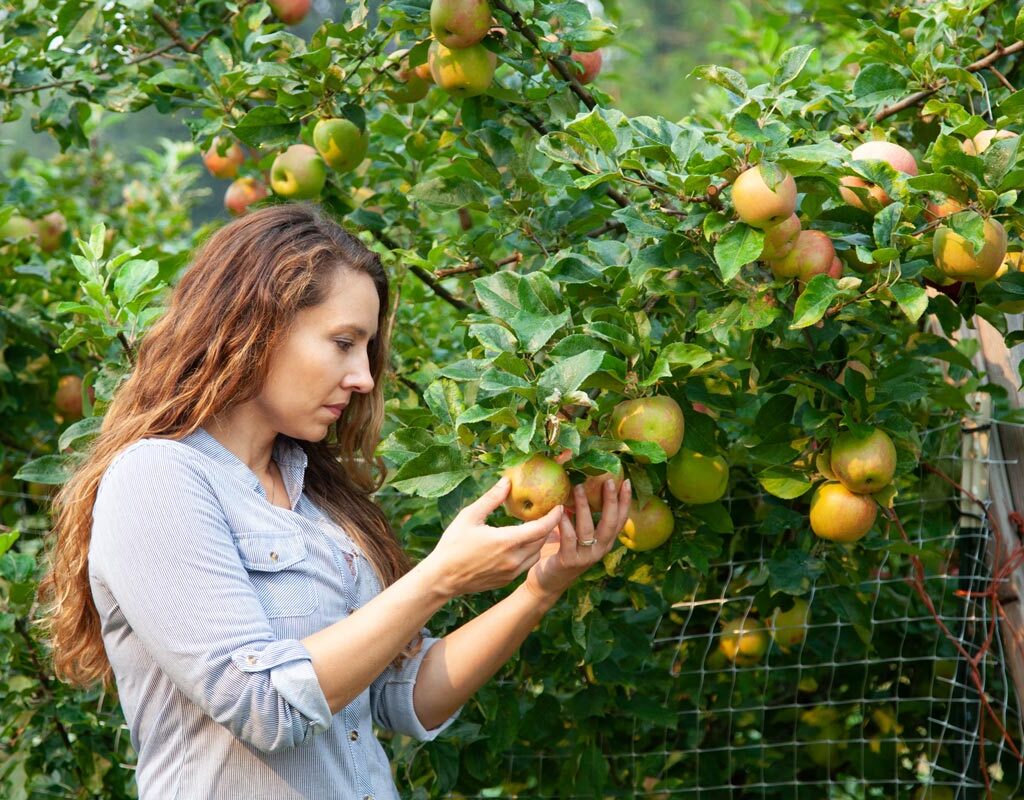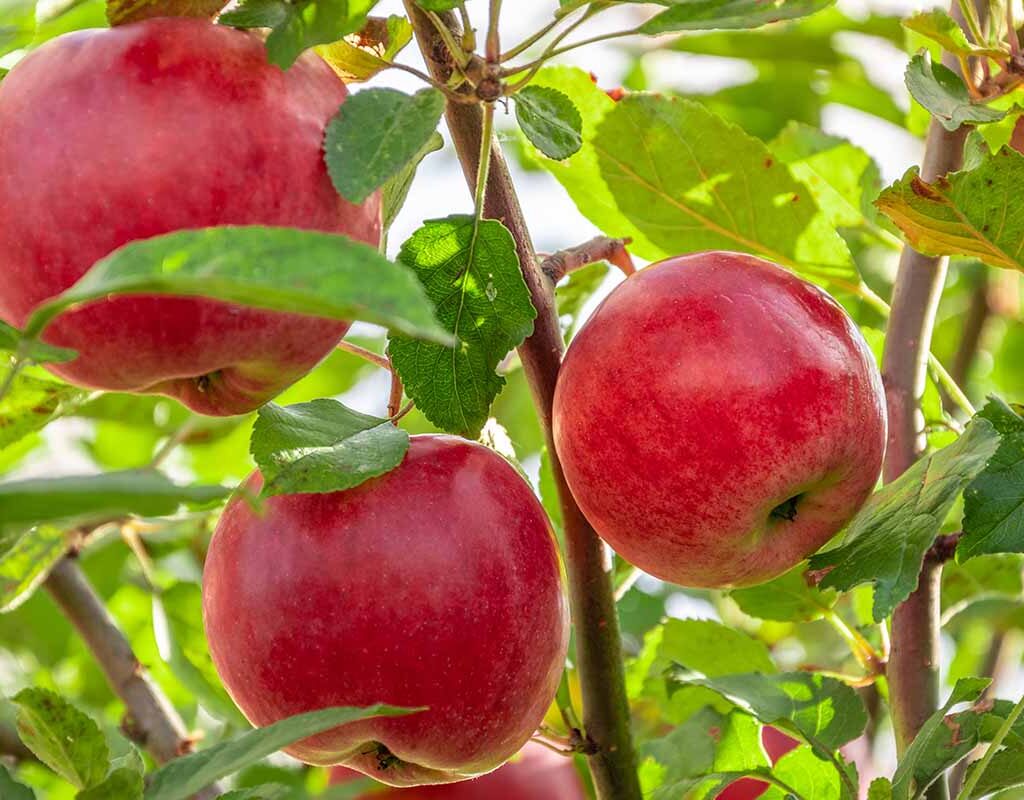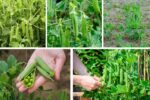Apple trees (Malus domestica) are among the most cherished fruit trees worldwide, renowned for their crisp, juicy fruits, nutritional benefits, and versatility in culinary uses. Growing apple trees from seeds can be a rewarding endeavor, whether you aim to cultivate a single tree in your backyard or establish a small orchard. While growing from seeds requires patience and proper care, it offers the satisfaction of nurturing trees from the very beginning of their life cycle.
This guide provides a comprehensive step-by-step approach for growing apple trees from seeds to fully productive trees, covering seed selection, planting, care, pest management, and orchard management.
Why Grow Apple Trees from Seeds?

While many gardeners use grafted saplings for faster fruit production, growing apple trees from seeds offers several benefits:
- Educational Experience: Learn the full life cycle of apple trees.
- Cost-Effective: Seeds are inexpensive and widely available.
- Genetic Diversity: Seed-grown trees may develop unique fruit characteristics.
- Sustainability: Starting from seeds encourages self-reliance and eco-friendly practices.
Though seed-grown trees may take 5–10 years to bear fruit, careful planning and care can lead to a thriving orchard over time.
Step 1: Selecting and Preparing Apple Seeds

Not all seeds are suitable for planting, and proper preparation is critical for successful germination.
Choosing Seeds
- Obtain seeds from fresh, ripe apples of desired varieties.
- Choose organic or untreated apples to avoid chemical inhibitors.
Cleaning and Drying
- Remove seeds from the apple and rinse to remove pulp.
- Air-dry seeds for a few days in a cool, shaded area.
Stratification (Cold Treatment)
- Apple seeds require cold stratification to break dormancy.
- Place seeds in a damp paper towel or sand inside a sealed plastic bag.
- Refrigerate for 6–8 weeks at 33–41°F (1–5°C).
- Check periodically to ensure the medium remains moist.
Stratification simulates winter conditions and enhances germination rates.
Step 2: Germinating Apple Seeds

After stratification, seeds are ready for germination.
- Fill seed trays or small pots with well-draining potting soil.
- Plant seeds ½ inch deep and cover lightly with soil.
- Keep the soil consistently moist but not waterlogged.
- Provide bright, indirect sunlight or a grow light for 12–14 hours daily.
- Seeds typically germinate in 1–3 weeks.
Once seedlings emerge, maintain even moisture and avoid over-fertilization.
Step 3: Transplanting Seedlings
Seedlings grow slowly at first but require proper spacing as they mature.
- Transplant seedlings to larger pots when they reach 4–6 inches tall.
- Use nutrient-rich soil and ensure pots have drainage holes.
- Acclimate seedlings gradually to outdoor conditions (hardening off) before planting in the garden.
Proper care during this stage ensures robust root development and stronger trees.
Step 4: Planting Apple Trees in the Garden or Orchard

When seedlings are strong enough, transplant them to their permanent location.
Site Selection
- Choose full sun exposure (6–8 hours per day).
- Ensure well-draining soil to prevent root rot.
- Space trees 10–20 feet apart, depending on variety and rootstock type.
Planting Process
- Dig a hole twice the width and depth of the root ball.
- Mix compost into the native soil to enhance fertility.
- Place the seedling in the hole, ensuring roots are spread evenly.
- Backfill soil, gently firm it, and water thoroughly.
- Mulch around the base to retain moisture and suppress weeds.
Young apple trees need consistent care and monitoring for healthy growth.
Step 5: Fertilization and Watering
Apple trees require balanced nutrition and consistent watering:

- Watering:
- Water deeply once a week during dry periods.
- Avoid waterlogging; it can damage roots.
- Fertilization:
- Apply balanced fertilizer (NPK 10:10:10) in early spring before growth begins.
- Avoid over-fertilizing, as excessive nitrogen may reduce fruit production.
- Supplement with organic matter, such as compost or aged manure, to improve soil health.
Step 6: Pruning and Shaping Apple Trees
Pruning promotes healthy growth, structural strength, and improved fruit quality.
- First Year: Focus on establishing a strong central leader and remove competing shoots.
- Subsequent Years:
- Remove dead, damaged, or crossing branches.
- Maintain an open canopy to allow sunlight penetration.
- Prune annually in late winter or early spring before new growth begins.
Proper pruning encourages better air circulation, reducing the risk of fungal diseases.
Step 7: Pest and Disease Management
Apple trees are susceptible to pests and diseases, but natural management techniques can minimize impact:
Common Pests
- Aphids, codling moths, and apple maggots.
- Use insecticidal soap, neem oil, or beneficial insects like ladybugs for control.
Common Diseases
- Apple scab, powdery mildew, and fire blight.
- Preventive measures include crop rotation, proper pruning, and maintaining tree hygiene.
Regular monitoring and early intervention are key to maintaining healthy trees.
Step 8: Harvesting and Seed Collection
Apple trees grown from seeds may take 5–10 years to bear fruit.
- Harvesting:
- Pick apples when fully colored and firm.
- Taste test for ripeness as color alone may not indicate readiness.
- Seed Collection for Future Planting:
- Clean seeds from ripe apples, dry, and store for stratification next season.
Seed-grown trees may produce unique fruit varieties due to genetic variation.
Step 9: Expanding to an Orchard
If your goal is to grow multiple trees:
- Spacing: 12–20 feet apart for standard trees; 6–10 feet for dwarf varieties.
- Irrigation: Drip systems or soaker hoses provide consistent moisture.
- Mulching and Ground Cover: Reduces weeds and conserves soil moisture.
- Pollination: Plant multiple compatible varieties to ensure cross-pollination and higher yields.
With consistent care, your seed-grown apple trees can develop into a productive orchard over time.
Tips for Maximum Success
- Start with multiple seeds to increase the chance of strong, viable seedlings.
- Be patient; seed-grown apple trees take longer to fruit than grafted trees.
- Regularly prune and fertilize to promote healthy growth and fruiting.
- Monitor for pests and diseases and act promptly.
- Practice succession planting to ensure a continuous apple harvest from different varieties.
Conclusion
Growing apple trees from seeds is a rewarding and educational journey that allows gardeners to witness the complete life cycle of a tree—from a tiny seed to a mature, fruit-bearing plant. By following proper seed preparation, germination, transplanting, care, and orchard management techniques, you can establish healthy apple trees that provide fresh fruit for years to come.
Though patience is required, the result is a thriving home orchard filled with delicious apples, environmental benefits, and a deep sense of accomplishment. With careful planning and dedication, growing apple trees from seeds offers not only a sustainable source of fresh fruit but also a lifelong gardening experience filled with learning, growth, and natural beauty.





